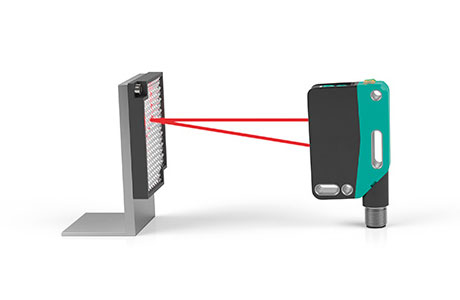Key Takeaway
The wavelength of a photoelectric sensor typically falls within the near-infrared and visible light spectrum. Near-infrared wavelengths range from 0.7 μm to 2.5 μm, while visible light ranges from 0.4 μm to 0.7 μm.
Choosing the right wavelength depends on the application. Near-infrared is commonly used in industrial applications due to its ability to penetrate dust. Visible light is useful for detecting objects with specific colors or transparency. Understanding the wavelength ensures the right sensor for your needs.
The Role of Wavelength in Photoelectric Sensor Functionality
The wavelength of light plays a vital role in how photoelectric sensors function. Most photoelectric sensors emit light in the visible or infrared spectrum. The sensor’s receiver detects when the emitted light is disrupted by an object, triggering a response. Shorter wavelengths, such as visible red light, are ideal for precision and high-resolution detection, while longer wavelengths, such as infrared, are better for detecting objects in harsh environments with dust or fog. A balance between wavelength and functionality helps you make informed decisions in sensor selection.

Common Wavelengths Used in Different Types of Photoelectric Sensors
In industrial applications, photoelectric sensors are vital for detecting objects using light. One of the most important factors when choosing a sensor is the wavelength it operates on. Different types of sensors use different wavelengths for specific purposes. For instance, retro-reflective sensors often use red light around 660 nm. This wavelength is easily visible and perfect for precise detection of small objects, making it a go-to choice in many production environments. In contrast, infrared sensors, which operate in the range of 800 to 950 nm, are commonly used in diffuse sensors. These wavelengths offer better performance in challenging environments such as dusty or misty areas.
Why does this matter? Because understanding the wavelength helps you pick the right sensor for your application. In clear conditions, red light sensors offer superior accuracy. However, if you’re working in an environment with potential interference, such as smoke or dust, infrared sensors can provide more reliable detection. Knowing the wavelength ensures that you select the sensor best suited to your needs, optimizing performance and minimizing errors.
How Wavelength Affects Detection Capabilities
The wavelength of a photoelectric sensor directly influences its detection capabilities. Shorter wavelengths, like red light, offer higher sensitivity to smaller objects, making them ideal for applications that require pinpoint accuracy, such as detecting small parts on an assembly line. On the other hand, sensors that use longer wavelengths, like infrared, are better suited for harsh environments where visibility is compromised. Infrared sensors can cut through obstacles like mist or smoke, allowing for more reliable performance in tough industrial settings.
But here’s the catch—while infrared is excellent for penetrating through difficult conditions, it may struggle with highly reflective or transparent objects. In such cases, shorter wavelengths, like red light, are more effective. This trade-off between sensitivity and environmental performance is something every engineer needs to consider. The right wavelength can be the difference between smooth operations and frequent detection errors.
Selecting the Right Wavelength for Specific Applications
Choosing the right wavelength for your industrial application depends on the specific requirements of your environment. Red light sensors are perfect for applications requiring precision. If you need to detect small objects on a fast-moving conveyor belt, red light, with its shorter wavelength, offers the accuracy needed. These sensors can even detect minute differences in object sizes, ensuring optimal performance in controlled environments like factories.
However, if you’re dealing with outdoor applications or environments with smoke, fog, or dust, infrared sensors are the better choice. They can detect objects more reliably even when visibility is poor. The key is to evaluate the environment and object characteristics before making a decision. This way, you can pick the sensor that performs best in your specific industrial application, ensuring efficiency and minimizing downtime.
How Environmental Conditions Affect Sensor Wavelength Performance
Environmental conditions can significantly affect how well a sensor performs based on the wavelength it uses. For example, if your sensor is operating in a dusty or foggy environment, infrared wavelengths will provide better detection because they can cut through these obstacles more effectively. This is why infrared sensors are commonly used in challenging environments. However, if the object you’re trying to detect is highly reflective, infrared sensors may not perform as well, and you might need a red-light sensor for more reliable detection.
Additionally, temperature fluctuations can also affect sensor performance. In outdoor environments, shifts in temperature can cause slight wavelength changes, potentially impacting the sensor’s accuracy. Being aware of these environmental factors allows you to choose a sensor that not only fits the application but also maintains performance regardless of external conditions. This ensures you get reliable detection in any situation, keeping your industrial process running smoothly.
Conclusion
Grasping the importance of wavelength in photoelectric sensor performance helps engineers make better choices when selecting sensors for different industrial applications. Whether it’s precision detection using red light or robust detection in harsh environments using infrared, the wavelength plays a pivotal role in optimizing your sensors. Always consider environmental conditions, object characteristics, and application requirements when choosing your sensor’s wavelength for efficient and reliable operations.
